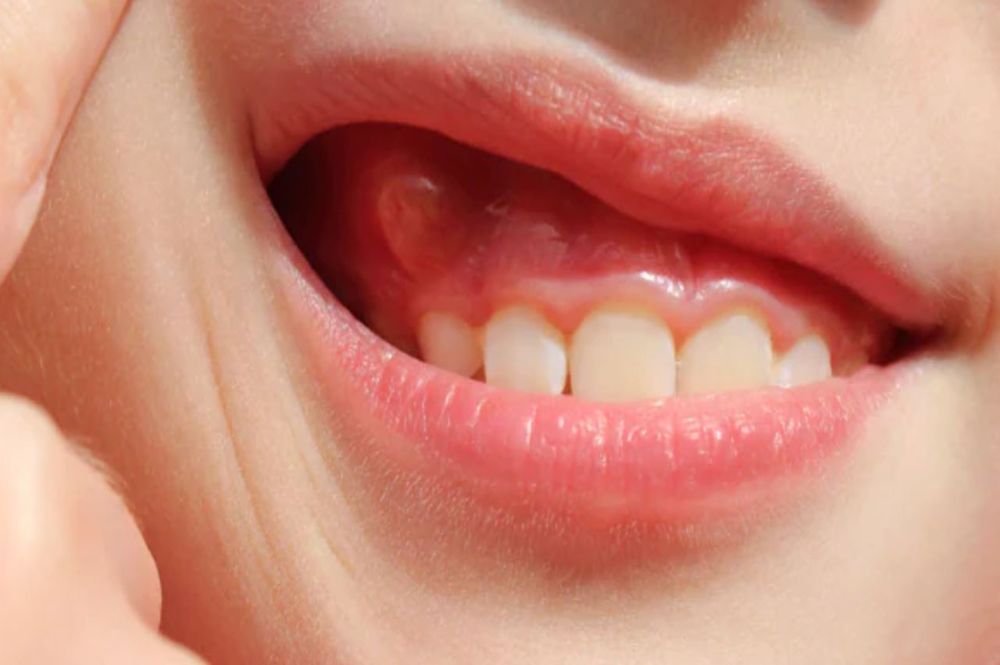Gum boils are small nodular fluctuant swellings that appear on gums. Most of the time, it is associated with various tooth/teeth and sometimes related to gums only.
Gum Boil in Adults
What causes gum boils?
When teeth are decayed, the cavity extends towards the pulp. Through the root canal of teeth, the infection reaches in periapical region. The region which surrounds teeth includes gums & bone. Once infection reaches the bone, it forms a cavity within the bone. There is an accumulation of infection and the formation of pus within the cavity. This causes swelling in the gums. I.e. Gum boil.
Usually, it’s painless and there is a sinus track associated with it. This sinus track helps to drain all the infections periodically. The infection accumulates in the bony cavity, and gum boil appears. With sinus, the infection is drained out and gum boil disappears.
This cycle is repeated over and over again. The patient typically complains of such gum boil.
Child teeth (deciduous teeth) are more prone to decay. And bone covering teeth is very thin. The decay easily reaches the pulp and infection reaches the bone. Which leads to gum swelling i.e. gum boil.
Gum Boil in children
Causes and treatment
Decayed teeth and gum disease are two main reasons for gum boils. Let’s see in details
Reason 1 – Tooth decay
a long-standing chronic carious tooth may cause gum boil. Caries reach pulp tissue and it gets necrosed ( slow degeneration ) slowly. It creates space within root canals and this space is occupied by pathogens. These pathogens enter the bone which surrounds the tooth from all sides. These pathogens start proliferating and produce pus. This pus causes swelling in the bone and eventually swelling in the gum ( gum boil ).
Treatment (If gum boil is small) Root Canal Treatment Swargate
Usually, gum boils are treated with simple root canal treatment. Treatment is multiple visits and the patient has to visit the nearest dentist a couple of times. In the first visit, after administration of local anesthesia, root canal treatment is started, and complete cleaning and shaping of the canal are done. All pus is drained through canals.. and intracanal medicament is placed within the canal to promote healing as well as to disinfect canals.
After this treatment, the gum boil gets completely healed within a week. And the tooth becomes symptomless.
Once the gum boil is healed, root canal treatment is completed by filling the canals with biocompatible inert material, and the cavity is filled with a composite restoration.
In some cases, where there is only root stumps are remaining, extraction (removal or root stumps) is advised.
Treatment (if Gum boil is large)
Incision and drainage treatment is advised in large gum swellings, local anesthesia is administered and the incision is made over the swelling and complete drainage is achieved. Followed by root canal treatment or extraction.
Reason 2 – Gingivitis/ periodontitis
Inflammation of gums is Gingivitis and inflammation of periodontal tissues is periodontitis.
Periodontitis may cause swelling of the gum in some cases, where there is an accumulation of pus due to infection and inflammation of gums and periarticular tissue.
Treatment
Complete scaling and root planing with an ultrasonic scaler are required to treat periodontitis followed by medications and the local application of astringent gel to reduce inflammation and healing of gums.
Gum boils, also known as gum abscesses, can be quite uncomfortable, so it’s wise to seek dental care promptly. Microdent Dentistry seems like a viable option if you’re searching for a dentist in the Kothrud area. They may provide the professional care you need to address the gum boils effectively. Don’t hesitate to schedule an appointment with them to get the necessary treatment and relief.
Gum Boils Treatment: Find Expert Care at the Best Dental Clinic Near Swargate
Microdent Dentistry, renowned for excellence, provides superior care for gum boils at our best dental clinic near Swargate. Under the skilled guidance of Dr. Rohit Joshi, our patients receive expert treatment tailored to their needs, ensuring swift relief and lasting oral health. Trust Microdent Dentistry for top-tier dental care.
Why is it important to treat gum boils
Gum boils are an accumulation of pus within the bone. This accumulated pus erodes bone from within and causes a cavity in the bone. There is a gradual loss of precious bone.
It’s important to preserve this bone as it gives support to teeth and also for a future prosthesis (bridge or implant).
For more details
Address — Ground Floor, block 4, Sarvadarshan Housing Society Opposite. Saraswat Bank, Nal Stop, Karve Road, Kothrud, Pune, Maharashtra 411004



